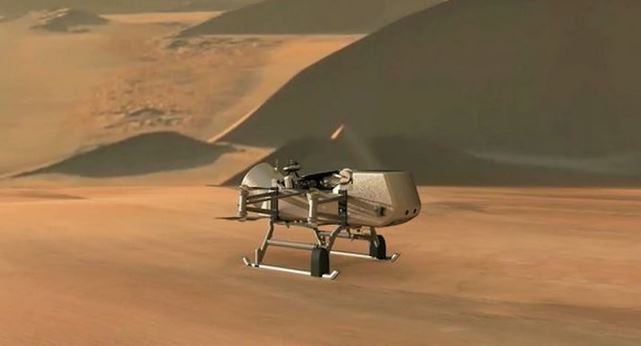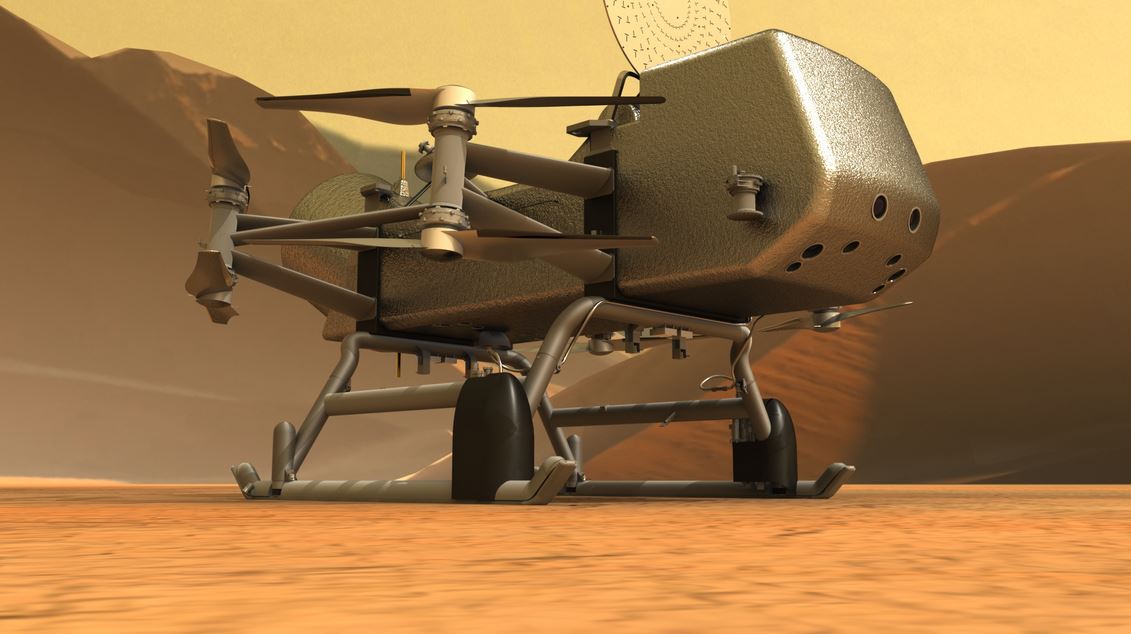NASA’s Mission to Titan: Dragonfly’s Journey to Explore Saturn’s Mysterious Moon

NASA’s Dragonfly rotorcraft is undergoing rigorous testing as it prepares for its mission to Titan, Saturn’s intriguing moon, with a focus on studying the celestial body’s complex chemistry, including areas that might have hosted liquid water beneath its icy surface. (Photo: axios.com)
Dragonfly’s Mission to Titan: Preparing for a Bold Journey of Discovery
According to source, NASA is currently undertaking a series of tests for its Dragonfly rotorcraft, a nuclear-powered drone dedicated to its mission to Titan, Saturn’s intriguing moon. Dragonfly’s mission on Titan aims to delve into the complex chemistry of this celestial body, with a particular emphasis on areas that may have harbored liquid water beneath its icy surface in the past. To ensure the drone’s rotors can perform optimally under Titan’s unique conditions, NASA has conducted rigorous testing at its Langley Research Center, including wind tunnel simulations of the moon’s atmosphere.
The core objective of the Dragonfly mission to Titan is to investigate potential precursors to life within our solar system by meticulously studying Titan’s chemistry. This car-sized drone, equipped with advanced cameras, sensors, and samplers, is poised to explore regions of Titan rich in organic materials.
In preparation for its mission to Titan, NASA has conducted multiple test campaigns, including comprehensive wind tunnel tests conducted in June, featuring a half-scale Dragonfly model with an extensive array of test runs.
READ ALSO: Drought and Water Crisis Grips the Amazon, A Challenge for Brazilian Authorities
Preparing for Titan: Building Confidence for the Pioneering Dragonfly Mission
The wealth of data acquired from these tests is paramount for comprehending the rotor’s performance in the dense atmosphere of Titan. It serves to bolster confidence in the simulation models employed on Earth before the drone embarks on its mission to Titan.
The Dragonfly mission to Titan signifies a significant milestone in the realm of space exploration, with its profound goal of exploring a distant moon brimming with potential for prebiotic chemistry. The team involved is thrilled about the progress of the mission to Titan and the formidable challenges it entails.
READ ALSO: Star Goes Supernova Event, Betelgeuse’s Puzzling Dimming Unraveled in High-Resolution Images
























